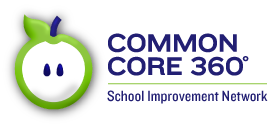If you are familiar with the scientific method, using the STEM (Science, Technology, Engineering, and Math) Process will make sense. The beauty is that this process can easily be adapted for all subjects. Teachers of every subject and grade teach STEM somewhere in their curriculum, if not every day—they may not have looked for it, or known it. These steps will help:
1. Question
Ask questions to help understand the problem
What will you need to do? How will you do it? What do you want to accomplish? Students will learn to ask questions that lead to answers and discover that all questions do not necessarily lead to the right answers. Solving a problem is like solving a mystery. If students leave your class asking questions, it’s a good thing.
Note: While there could be a research component throughout the engineering/STEM process, the questioning step is a perfect place to digitally research ideas to help broaden possibilities and to articulate better questions. Great Common Core fit.
2. Imagine
Imagine and brainstorm solutions
Use interactive technologies to help make and present the brainstorming fun, and also archive the ideas for later look.
3. Plan
Plan and draw a design
These can be pencil and ink, but digital drawings with tablets, laptops, and interactive whiteboards or interactive tables will make more sense and can be manipulated beyond paper images. The proper collaborative group placement will help students with limited artistic ability. Not everyone has to be an artist in a supportive group.
4. Build
Create and construct a working model
There is nothing better than getting hands-on here. Most classes aren’t equipped with 3D printing yet, so any way students can create their designs works—for now—paper, tape, glue, clay, string…
5. Test
Test and experiment with that model controlling one variable—test, measure, and record
Experimenting, testing, and a bit of noise go together to make this a memorable learning time for students. Change the variable… try again… and again.
6. Improve
Improve and revise the model
How can the model be improved? Repeat the steps in this problem-solving process.
Here’s where the review is actually part of the process. Encouraging modifications to make the best model from the best design is the goal. It takes time to do this, and some students will ask for more or continue the process long after the initial lesson is history.
